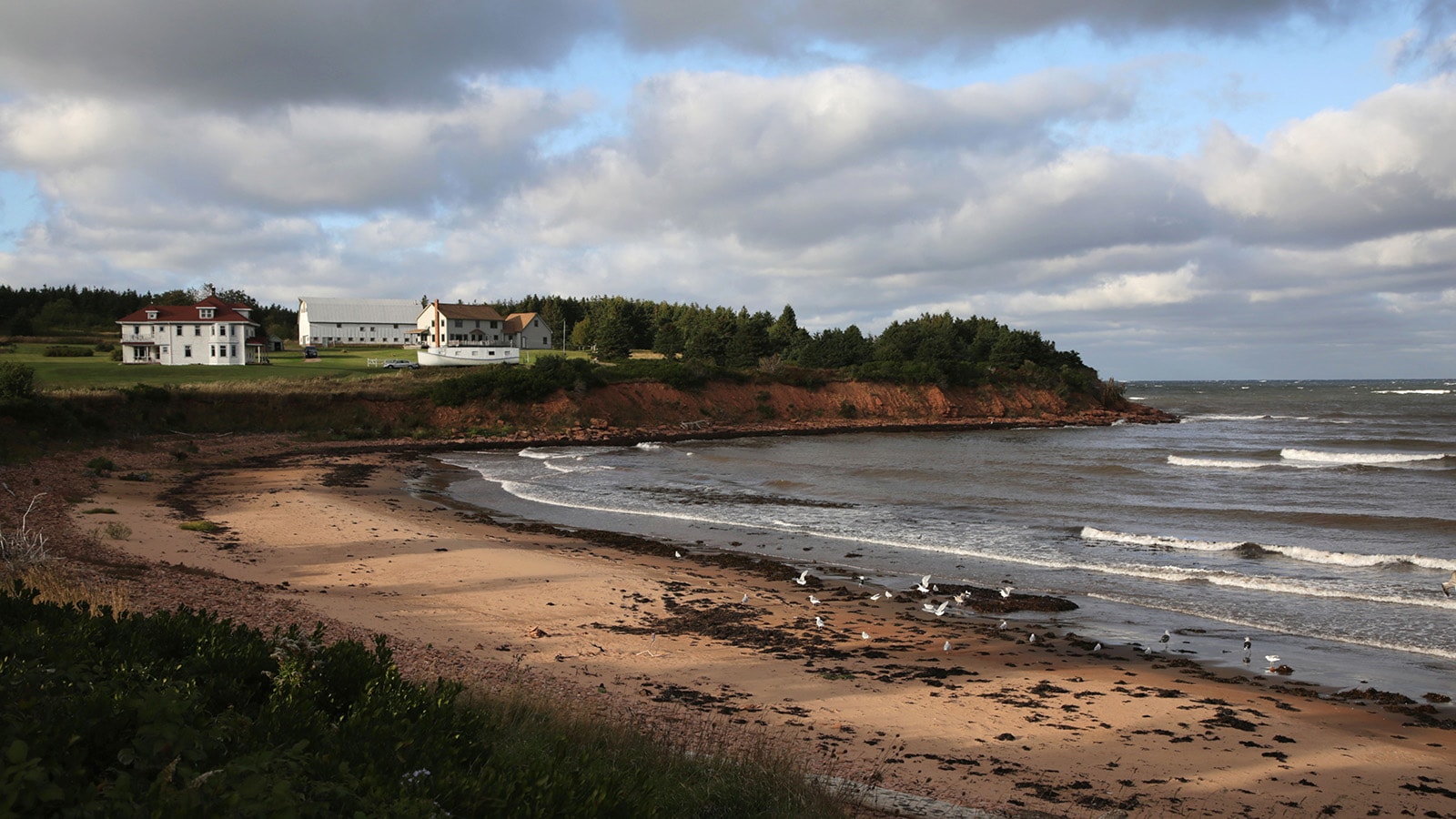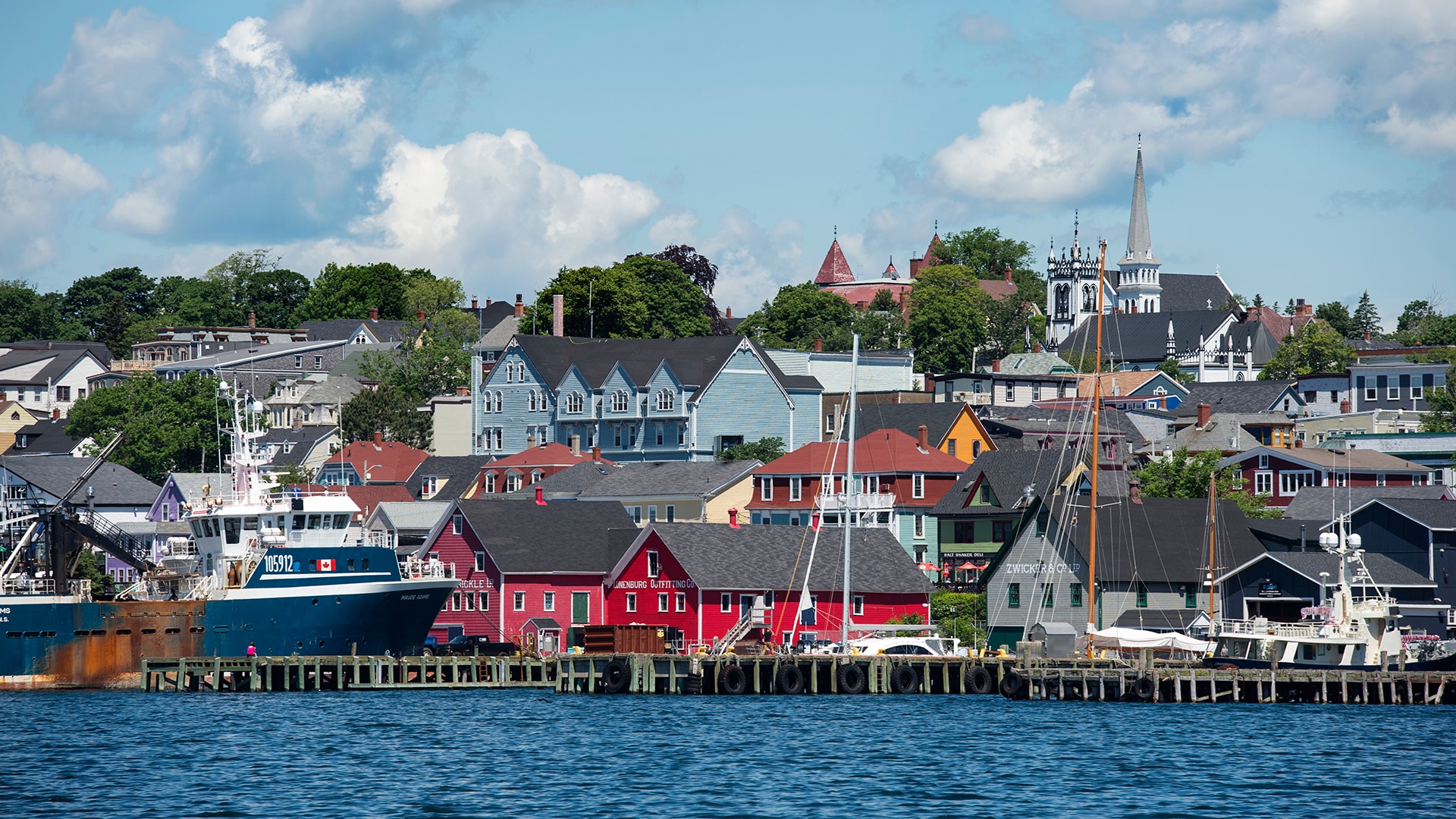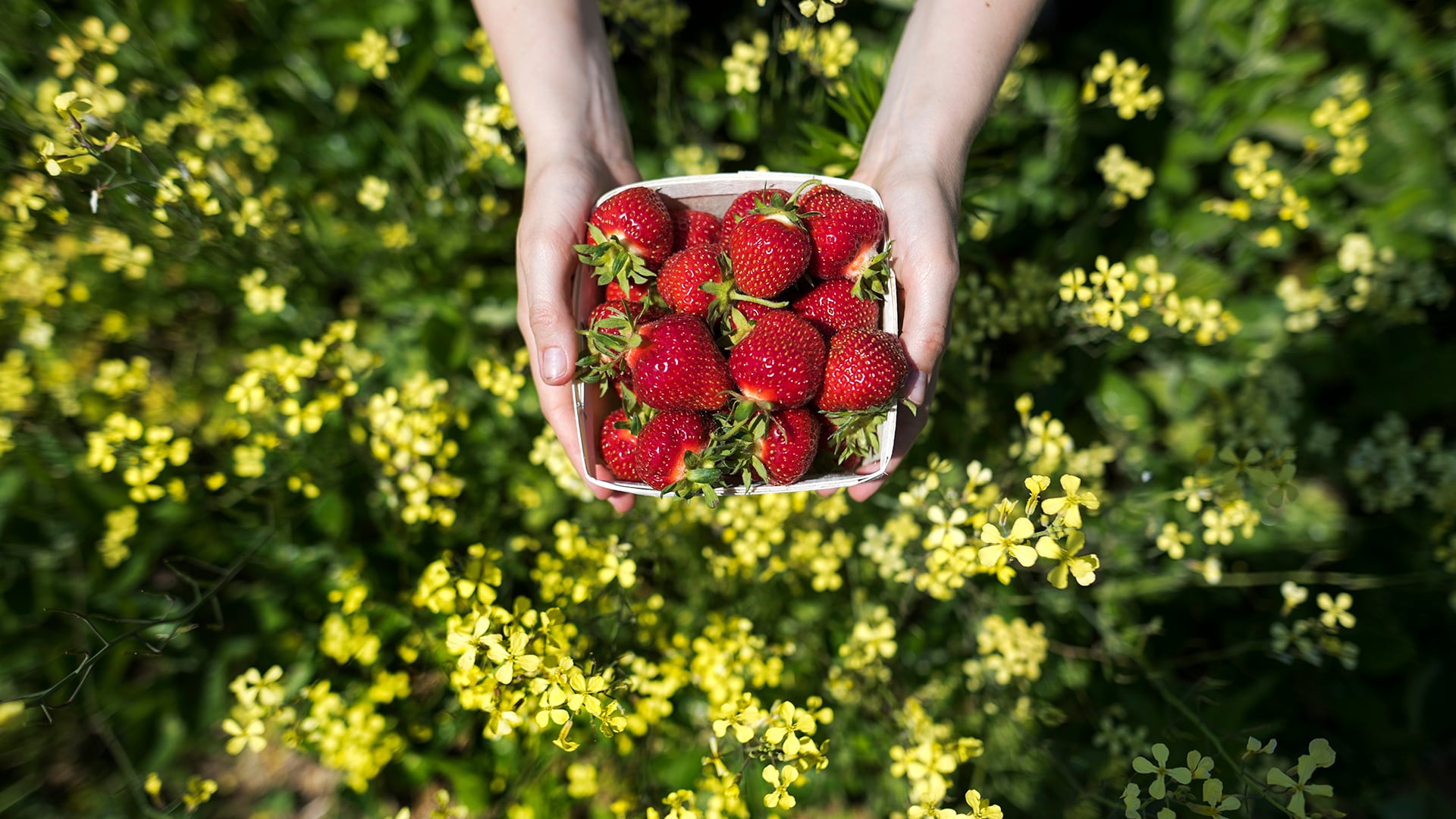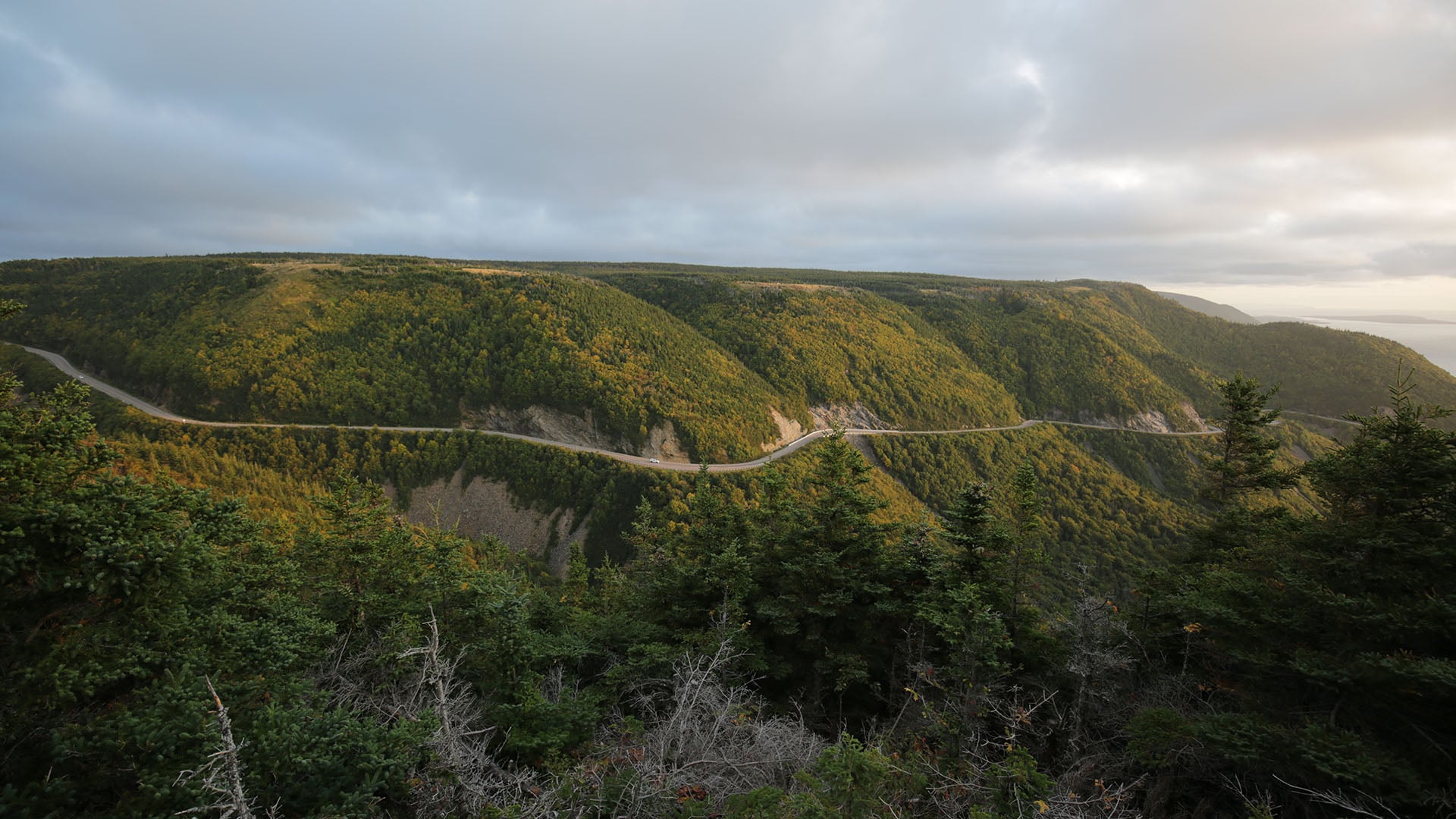Nova Scotia's Wild Berry Bounty
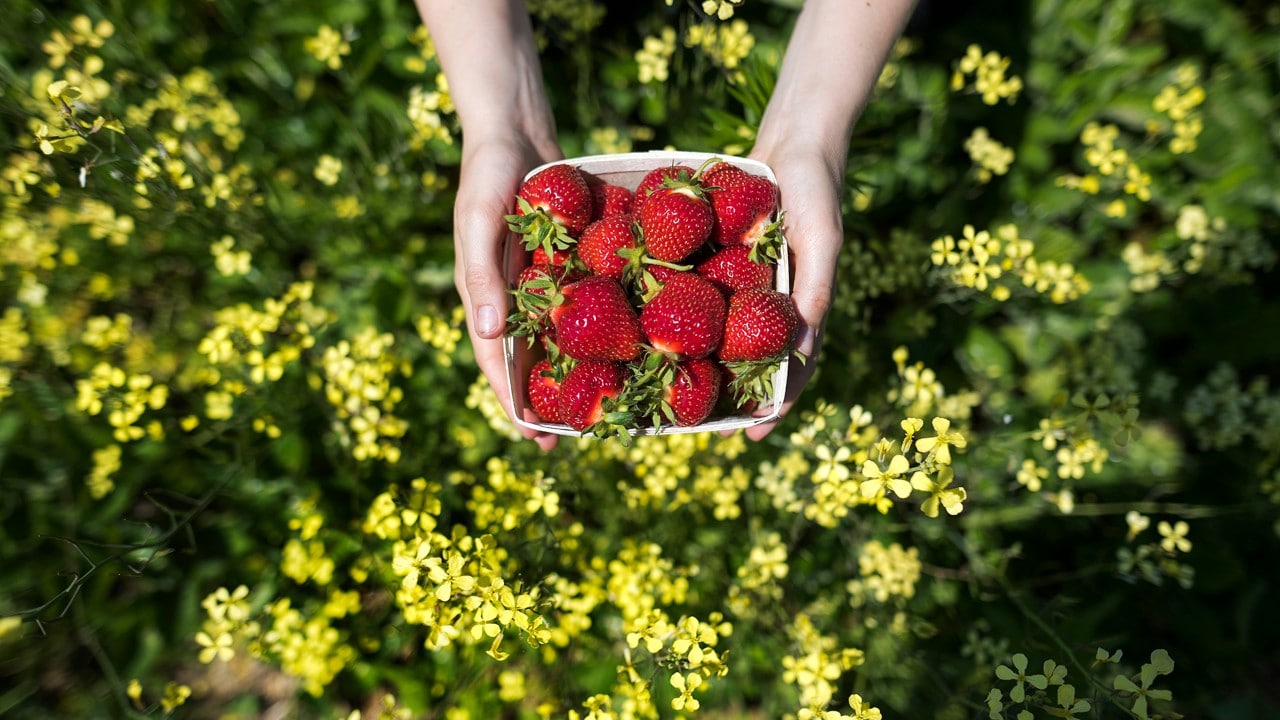
Delicious summer strawberries
Story by Karen Pinchin; photos by Darren Calabrese
Karen lives in Canada's Maritime Provinces. Darren is an award-winning photographer based in Canada.
A Canadian writer recalls her fruit-foraging childhood.
Farm owner Peter Elderkin bends over in a sun-washed field beside his sidekick, a squat Valley Bulldog named Theo. Rows of strawberry plants surround them. In the shade of large spiked leaves, the huge, deep red fruit waits to be cupped and plucked.
Elderkin sports gray hair and a bushy drooping mustache perfect for an 1850s sheriff — “I won the beard-growing contest in high school,” he laughs. He is a ninth-generation farmer whose forebears arrived on this land in 1760. His busy Farm Market, Bakery and U-Pick, located on the main road going into Wolfville, Nova Scotia, is a sprawling 175-acre spot where summer equals berries.
As I stoop along furrows at Elderkin’s farm — biting into as many warm, jammy berries as I’m packing into my wooden box — I’m transported back to my childhood.
Before World War II broke out, my Polish grandfather (aka my Dziadzia) wandered fields in Europe, picking wild blueberries, gooseberries, raspberries, black currants and strawberries, which his grandmother served with cream and sugar. He never ate a processed berry until he arrived in Canada after the war.
Many years ago in rural Ontario, he passed down his harvesting skills and taught me — as well as my siblings and cousins — how to find mushrooms and berries in the woods. Wild blueberries were small and plentiful, but raspberries were nearly pureed on their plants by the summer heat. We filled bowls and mouths with large, ungainly blackberries, bitter chokecherries and infuriatingly tiny strawberries. Gem-toned juice stained our fingers and faces; thorns scraped our tanned calves while black flies feasted on our shoulders. Yet, we always returned feeling triumphant.
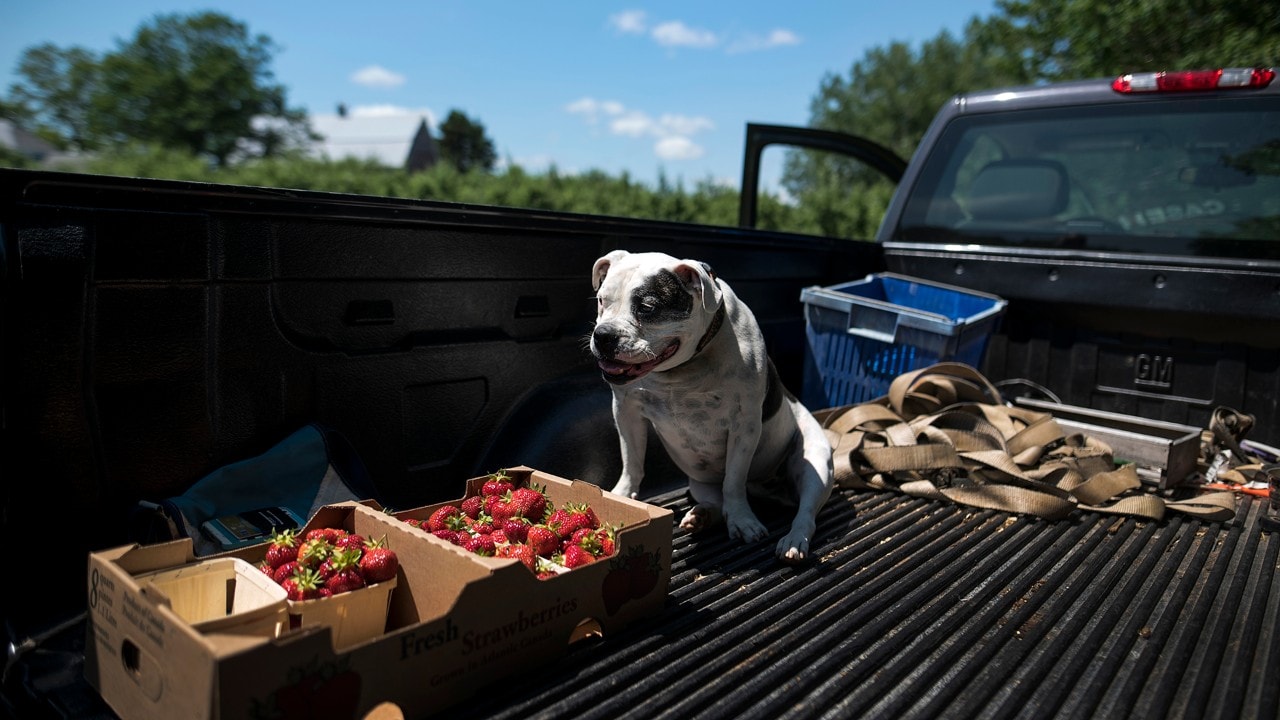
Theo guards the berries.
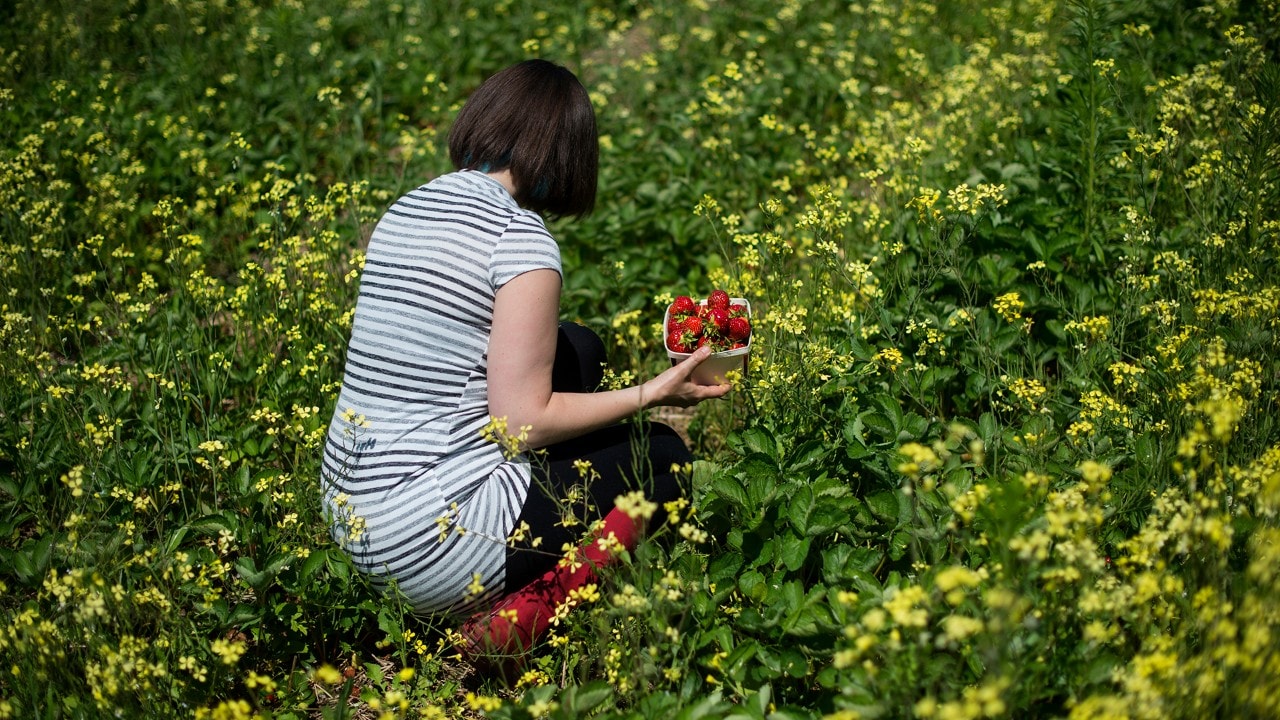
Our author works in the strawberry fields.
Now, I live in Nova Scotia, where the Annapolis and Gaspereau valleys are hot and bountiful in summer, with a backdrop of rolling hills and dramatic, red-rock cliffs. After the deep chill of Canadian winter passes, this fertile land comes alive with berries, fruits, produce and grains. Early in the season, the top crop here is strawberries, which grow like weeds in the dark, loamy soil.
But the blueberry is undeniably the berry king of Nova Scotia. Oxford, Nova Scotia, is the self-proclaimed “Wild Blueberry Capital of Canada.” The term “wild” is a bit of a misnomer, though. It refers to small blueberries grown on lowbushes, which can exist on a commercial farm. They have genetic diversity, high nutrient levels and tart flavor. This is in contrast to the larger, sweeter blueberries grown on highbushes.
If you go to Oxford, you’ll be greeted by a whimsical, truck-sized blueberry character with large white eyes, lanky blue arms akimbo and a crown-like blueberry top. In this town, home of Oxford Frozen Foods — the world’s largest industrial processor of wild blueberries — this native berry is the name of the game. The company owns more than 24,000 acres of wild blueberry land across three Canadian Maritime Provinces and Maine, which they claim makes it the largest fruit farm in the world.
Despite the large-scale commercial success, blueberries are about more than just big business. From August to early September, rural Nova Scotia comes alive with roadside stands hawking wild blueberries in brimming pints and quarts, along with pies, jams and other treats. The harvest culminates in a weeks-long, province-wide festival featuring pancake suppers, art exhibits, concerts, open farm days and tea parties.

Oxford, Nova Scotia
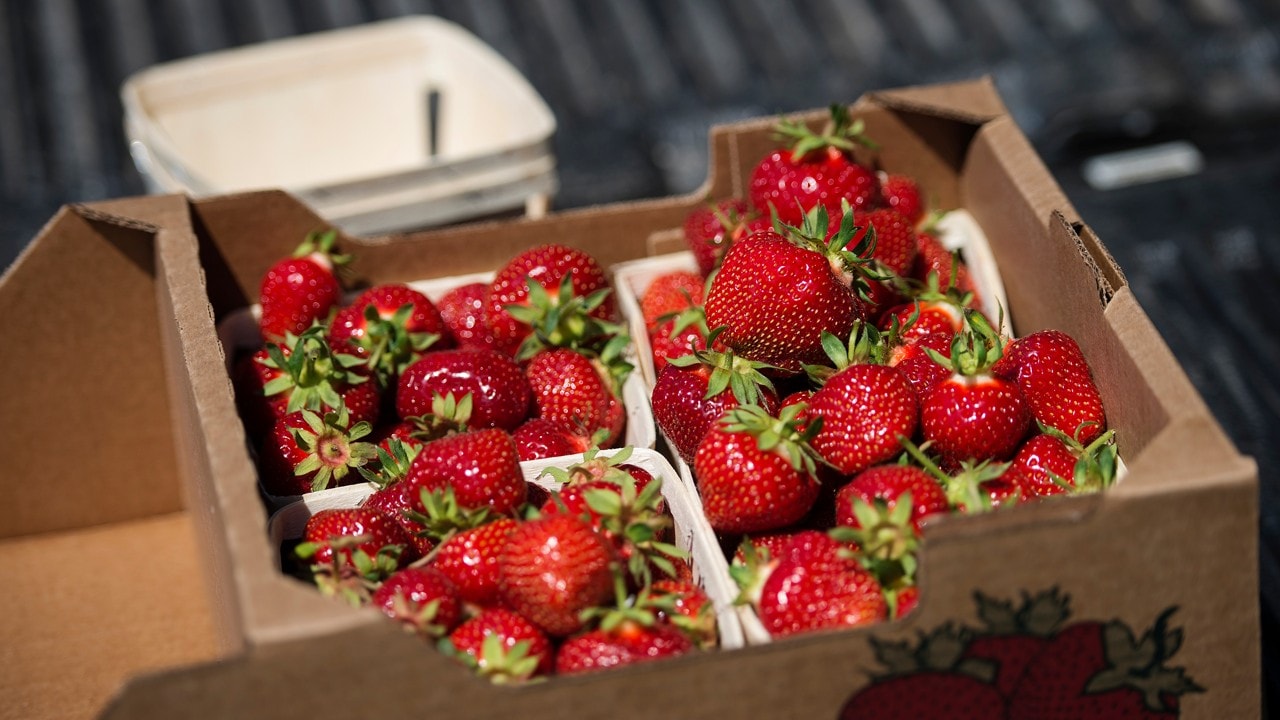
A delicious handpicked bounty of berries
Although I’m picking strawberries today, I finish my morning in another field, standing next to a tall, bushy blueberry plant. It’s already dropped its blossoms and has tiny green nubs of growing berries visible.
For hungry locals and curious tourists looking to buy blueberries — especially those who don’t want to bushwhack on publicly owned land in search of wild bushes — Elderkin’s U-Pick grows highbush blueberries that are larger and easier to pick. While they don’t have the same qualities as the wild berries I remember, the plump fruits fill a pint faster and stain palms just as quickly.
The picking season at Elderkin’s primarily attracts visitors from Halifax, the closest major city, but also sees tourists from around the world. "What's limiting the growth here is limited by our population," Elderkin says. "If we were to take our market and put it outside a major city, I'd do 100 times the business.”
These days, Elderkin sleeps in, opening the market at 8 a.m. He’s training his sons to take over the farm — making them the 10th generation to work the land.
In large part, the berries are the reason the family farm has stayed in business. “Pick-your-own has kept our farm afloat. Fruit and berries have gotten us through some very lean times,” he says. And he’s not complaining. “The Annapolis Valley is one of the five best growing regions in Canada. And we never tire of the view,” he says.
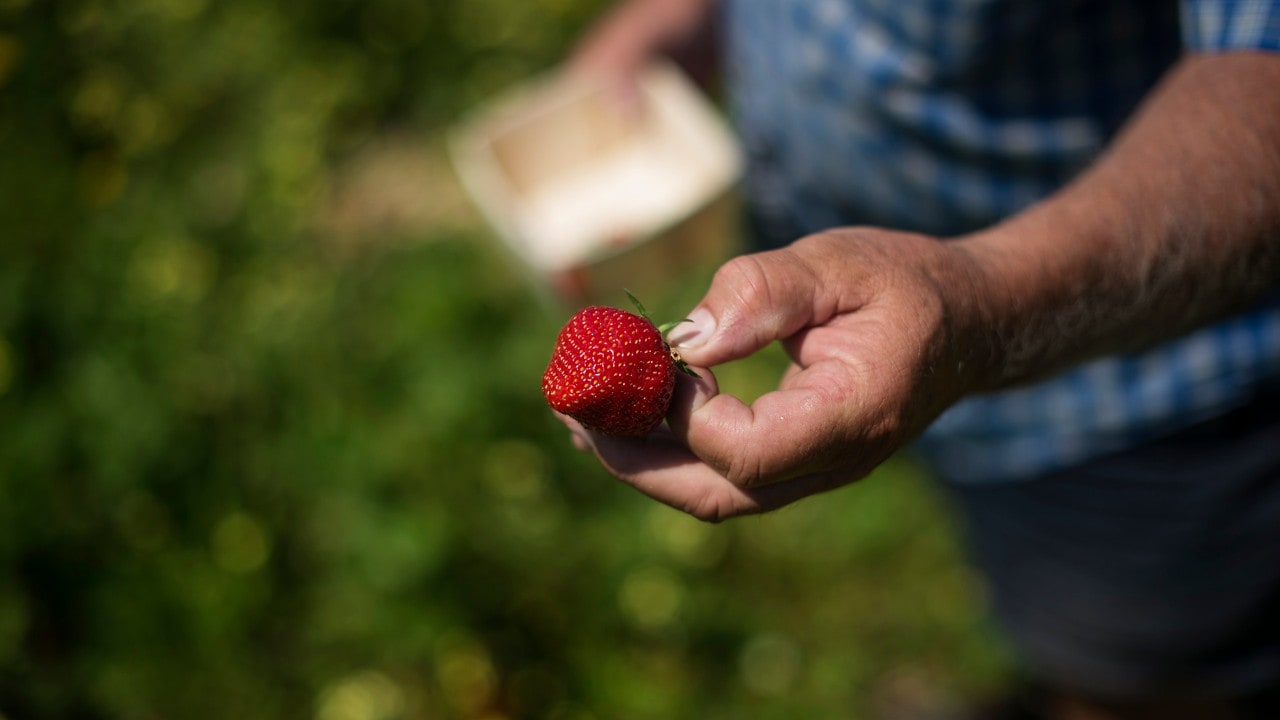
A freshly picked berry
Related
Read more stories about Canada's Maritime Provinces.
- Road Trip to the Phenomenal Bay of Fundy
- Weekend Getaway to Delightful St. Andrews-by-the-Sea
- Road Trip to See Prince Edward Island Lighthouses
- Road Trip to Prince Edward Island, Canada
- New Brunswick Trips
- Prince Edward Island Trips
- Weekend Getaway to Lunenburg, Nova Scotia
- Road Trip to Nova Scotia's Wild Berry Bounty
- Road Trip on the Cabot Trail, Nova Scotia
- Nova Scotia Trips
- Road Trip to Nova Scotia Wineries




